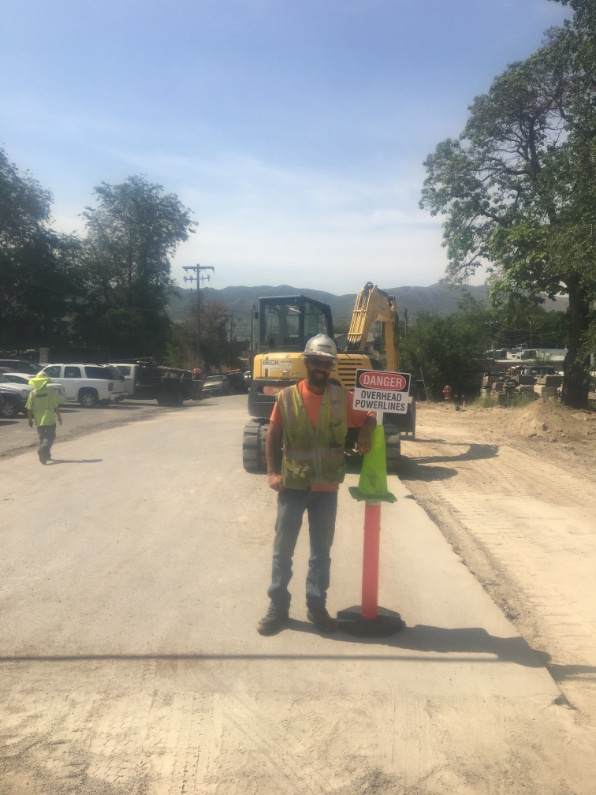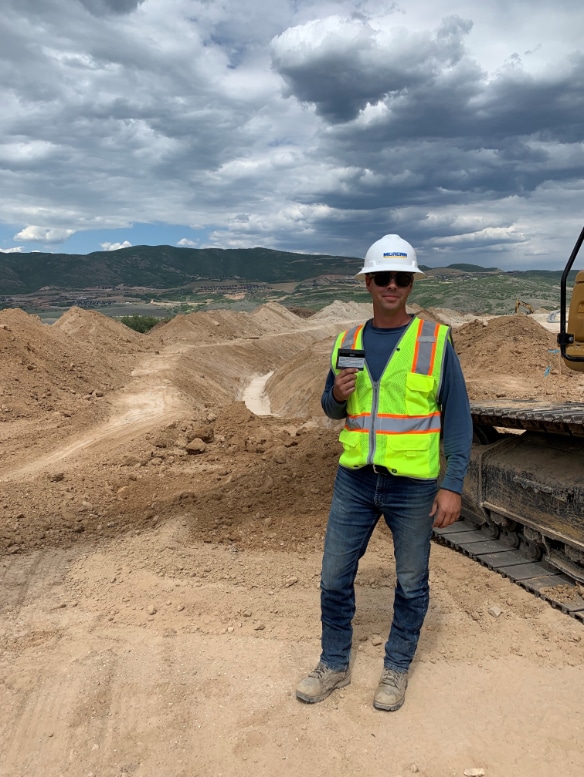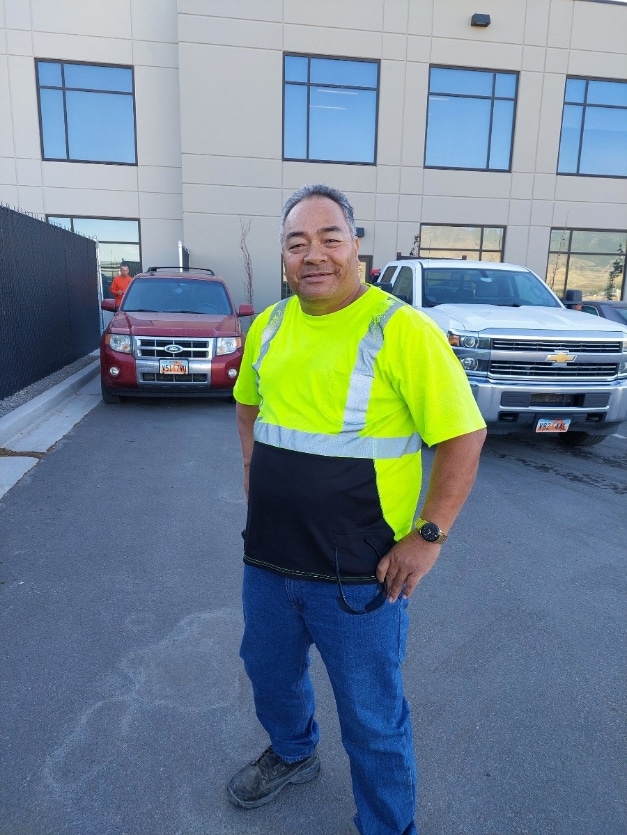Safety Incentives Stimulate Safe Practices
BY AsphaltPro Staff

Within the first month Morgan Asphalt, Salt Lake City, started a safety incentive program, the company recognized three team members who went above and beyond to be safe on the job.
Will Polatis, a paving foreman at Morgan, called and had signs brought to a job site for overhead power lines before the crew started on the project. Fisilau Latanoa, one of the company’s drivers, stopped a new driver from running over a fresh concrete curb and showed the driver how to avoid that situation in the future. And Tony Bundy dug a trench with perfect angles and slopes, and frequent ramps for co-workers to get in and out safely.
Each of the three employees received a $50 gift card and will be entered into a $1,000 drawing at the end of the year.
“We wanted to establish a program that rewards live, real-time behavior,” Safety Manager Jake Ward said. “People who have rewarded lagging indicators tend to find that it leads to people not reporting incidents.”
According to the Occupational Safety and Health Administration, lagging indicators measure the occurrence and frequency of events that occurred in the past, such as the number or rate of injuries, illnesses, and fatalities.
Earlier in his career, Ward experienced an incentive program based on lagging indicators firsthand when the company for which he worked gave away a $1,000 gift card for a year without a loss-time incident.
“Low and behold, we got what we wanted: no loss time accidents that year,” Ward said. It was only later that the company learned about a fairly significant injury that went unreported to keep the reward on the table. “You have to be careful not to give people an incentive to hide injuries and incidents.”
That’s why Morgan opted for a proactive approach.
“We’re specifically looking to correct known issues,” Ward said. “Every company has 10 things that are constantly recurring, and most of them are behavior based.”
For example, Morgan has long asked its employees to help one another back around obstacles. “That’s not a new expectation, but it isn’t being practiced regularly,” Ward said. Each of the three nominations within the first month illustrated consistent problems for the company. “Now that we’ve put that reward out there, we’re seeing some more traction on our expectations.”

Tony Bundy dug a trench with perfect angles and slopes, and frequent ramps for co-workers to get in and out safely.
Safety Incentives in Action
Morgan was cautious when establishing its safety incentive program that it didn’t come across as “managers handing out gold stars,” Ward said. Instead, the company encourages peers to nominate one another simply by sending an email to management with a photo and description of what their co-worker did to promote a culture of safety.
After management confirms the event, the nominated employee receives a $50 gift card and their name is entered into a pool for a chance to win $1,000 cash at the end of the year.
There’s no limit to the number of employees who can win gift cards each month. “We thought about limiting it to one per month, but we didn’t want people not to nominate each other if they knew someone had already been nominated that month,” Ward said.
Response to the program among Morgan’s employees has been positive. “Several guys have approached me to ask how they could get nominated,” Ward said. “I always say, ‘go above and beyond or meet a safety expectation that isn’t usually being met.’”
New Company Culture, Continued Safety Culture
The idea for a safety incentive program was borne out of a larger discussion about Morgan’s safety culture. The company has grown tremendously in a very short period of time after Morgan established its first hot-mix asphalt plant, growing almost 40 percent in four years.
“We’ve lost a bit of our old culture, but we want to bring back the family feel we’ve always had,” Ward said.
The company plans to continue advancing its safety culture beyond its incentive program. Over the past several years, Ward has focused heavily on enhancing Morgan’s near-miss reporting, resulting in a 200 percent increase in the last year.

Fisilau Latanoa, one of the company’s drivers, stopped a new driver from running over a fresh concrete curb and showed the driver how to avoid that situation in the future.
“If you can focus on near misses, your actual events will decrease substantially,” Ward said, and Morgan’s experience has been no exception. “Incidents are down significantly this year, in both frequency and severity.”
Morgan accomplished this through frequently reminding its employees that the management team wanted to hear about near misses and reiterating that employees would not get in trouble for near misses that they report.
Early on, Ward recognized in front of the whole company one division that had started reporting near misses regularly. “That created some friendly competition and illustrated that no one is getting in trouble,” he said.
Another initiative Ward has instituted is having superintendents or foremen accompany injured crew members to receive medical attention when it had previously been Ward who would do so.
“It’s an inconvenience for the foreman to get pulled off the job, so I think it encourages them to take safety more seriously,” Ward said. Seeing the crew member’s family at the hospital also reminds managers that safety is personal.
“It’s easy to get bogged down with compliance, legal, insurance and money,” Ward said. “That stuff is important, but if you’re going to be successful, safety has to be about getting people home to their families.”
